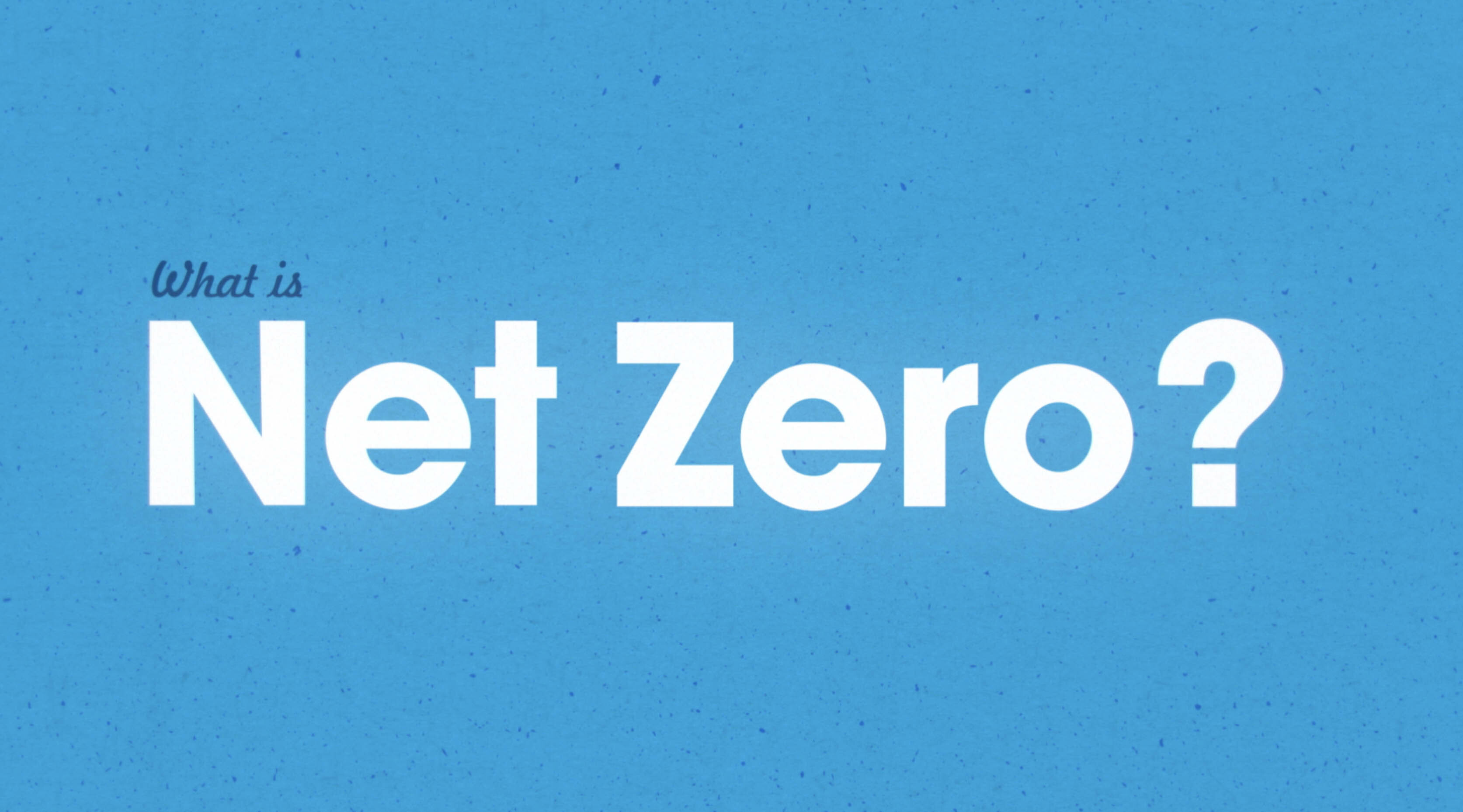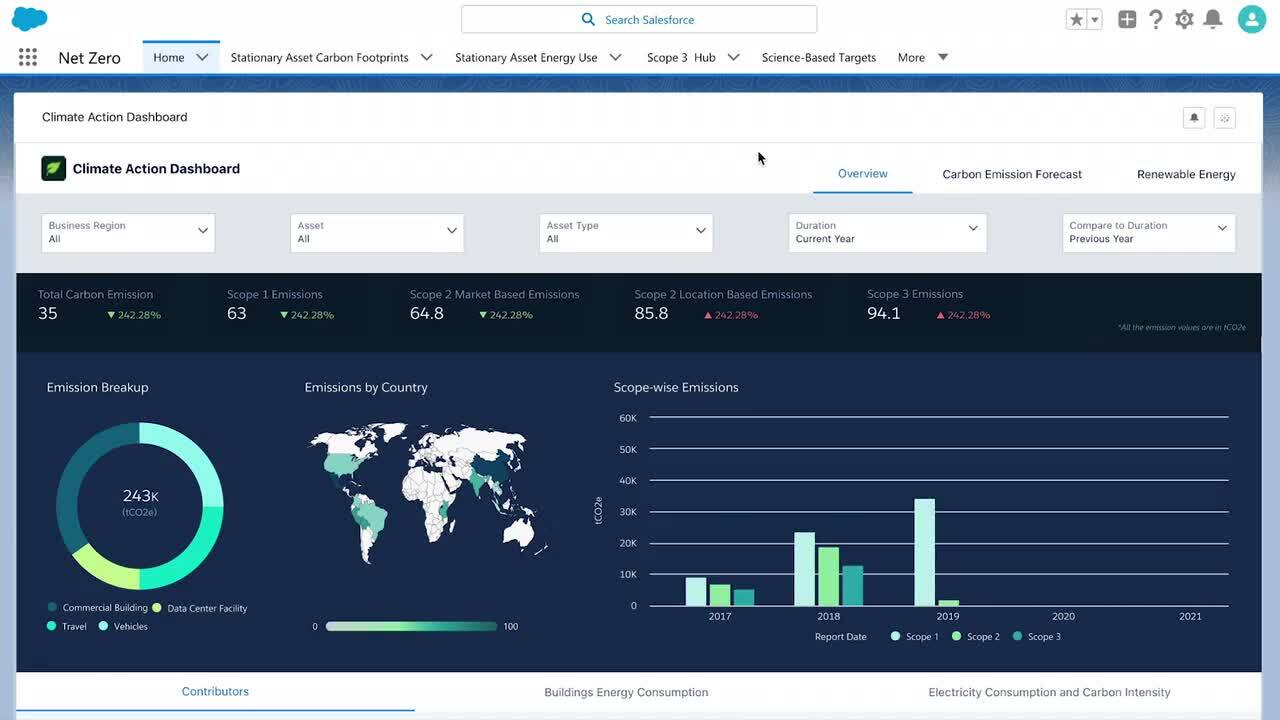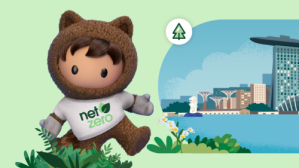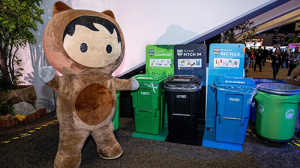How Your Business Can Start the Journey To Net Zero



The world is in a climate crisis, and bold action is the only way forward. Find out what you and your business can do today.
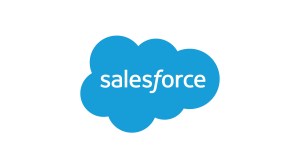
Salesforce
Over the past fifteen years or so, sustainability has progressed from a buzzword to a concept at the centre of public consciousness.
The ASEAN region is one of the most vulnerable in the world to future climate change. Many livelihoods depend on climate-sensitive sectors, and the region features long coastlines. Climate concerns include climbing temperatures, rising sea levels, extreme weather events, worsening air pollution, biodiversity losses, and the depletion of natural resources. As a result, the momentum to make real change is picking up speed, particularly among the business community.
As employers, providers, and community leaders, businesses are uniquely placed to lead by example. In order for businesses to make a contribution to the journey to a net zero future, sustainability needs to be a factor in all business decisions. In 2020, the total GDP of the ASEAN region was approximately US $3.08 trillion. If little to no climate action is taken, by 2050 sea level rise alone is estimated to cost ASEAN nations an average of over US $2 trillion each. ASEAN companies who lead the charge on climate change stand to gain $1 trillion in economic opportunities by 2030.
What does that mean? Action is ongoing and required at multiple levels, and there isn’t a single answer. While the sustainability journey is specific to each organisation and isn’t always clear-cut, one thing is for sure: businesses can be platforms for change. The time for action is now.
Net zero and climate change: the key terms you need to know
We all know about climate change, but what about more recent sustainability-related terminology? We’ve summarised some common terms and their recognised definitions below:
- Net zero: cutting climate pollution to zero by balancing what you put out into the atmosphere, with what you remove from it.
- Carbon neutral: achieving a balance between the behaviours and practices that produce carbon dioxide and those that limit and remove it.
- Circular economy: a model of production and consumption that fosters the continued life cycle of ‘waste’ through practices such as reusing, repairing, recycling, upcycling, refurbishing, and sharing.
5 questions with a sustainability advocate
We spoke to Salesforce’s César Vieira Lino, Regional Vice President for JAPAC Earthforce. Earthforce is a Salesforce Employee Resource Group that focuses on sustainability.
1. How can tech-based companies reduce their environmental footprint?
Every company will need to find its own approach, but tech companies have three areas that can have the biggest impact. These are operations, product, and offices.
Salesforce is a tech company, so we can use it as an example. We have a net zero operations strategy, which means that our data centres and so on are carbon neutral. In September 2021, Salesforce announced it became a net zero company across its full value chain. It has also achieved 100% renewable energy for all its operations.
Salesforce also launched a sustainability focused product — Net Zero Cloud. Not every company has to create a dedicated product, of course. There are other things you can do, including working with partners that have sustainability as a core value.
Finally, there are things you can do in offices, but I’ll address that in the next question.
2. How do Salesforce employees become involved in sustainability initiatives? How can other companies encourage engagement?
Of course, my colleagues who are working on Net Zero Cloud are working on many sustainability projects. Let’s look at how we approach volunteering. Earthforce is our ‘green team’. It has chapters in our offices around the world that hold events, connect with local organisations, and advocate sustainability.
Many companies will have similar ways for individuals to effect change. I see three pathways:
First, there are the things you can do in your personal life. That might be changing your lifestyle or spreading awareness of sustainability issues.
Second, is affecting change within your office and immediate teams, which brings me back to the first question. When I first joined Salesforce, we were already on the path to becoming greener at the company level. But when you look at the office level — supplies, catering, etc. — there’s no global standard you can apply from a top-down point of view. It has to come from the ground up. You can find ways to move away from single-use plastic, to encourage the purchase of local supplies and produce, and so on.
Third, is making use of your professional influence. You can report to your organisation about inefficiencies and what’s having the biggest carbon footprint in your area. You can be the person that pushes your company to be more sustainable.
3. The Salesforce ecosystem is made up of many partner organisations. How do you negotiate your own sustainability ethos with theirs?
I personally believe that either we change or the world will force us to change. I can only do my best to influence others to make the right decisions for themselves. It’s not really a negotiation, more of an acceptance that ‘This is my ethos, and yours is yours. Let’s try and live together with these two realities’.
When your company has a well-known product, project, or ethos, you get asked questions. Those questions lead to opportunities to listen, encourage, and advise partner organisations on their own sustainability path.
Salesforce is a founding partner of the Trillion Trees initiative and we have our Earthforce group. Just explaining how our equality groups operate inspires other companies and their employees to drive internal change.
4. What would you say to an organisation looking to assemble a ‘green team’?
You need self-motivated people, as they’re the most effective for the green team. Identifying those individuals is the first step. There has to be a grassroots element to it.
Then, drive executive sponsorship. This helps to define the scope and range of the team and helps them to make the best decisions.
Finally, bring wider visibility to the work of the team. This uncovers potential blindspots in their work and gives them a broader audience. This is especially useful when their work requires greater buy-in from more stakeholders. This visibility also spreads the word and drivers further advocacy, which brings in more people to the green team.
5. Over the coming years, what will be the biggest concern when it comes to sustainability in business?
My biggest worry is that everything stays as is. Relying on economic factors alone to change minds is going to be very hard.
For example, companies could understand the need for change, but they will look at the ROI and not see how they will benefit.
Of course, over time, it will become more and more obvious that we need to change. But we are running against the clock, so we need to take that leap of faith as individuals and companies.
To companies that are reluctant or don’t see the benefits, I would ask them to switch the ROI equation. I’d say to them that it’s not about how much it will cost to change, but the massive cost of not changing.
At Salesforce, we believe that business is the greatest platform for change. Success should be for everyone on Earth and the planet itself. Join our #TeamEarth.
Ready to make a difference?
Are you ready to take the first steps on your sustainability journey? Here are some ways to get started.
Look out for those who care about sustainability
Look out for passionate people in your organisation. They are the ones who make things happen. Create an environment where they have the opportunity to come forward.
Stay informed
Sustainability is an ever-evolving field. Keep an eye on public policy and global climate endeavours to ensure that you are always up to date.
Start tracking emissions
If businesses use technology to track sales, why wouldn’t they do the same for their annual greenhouse gas inventory? Innovative technology now allows industries to implement sustainability initiatives in a way that’s never been possible before.
For example, Net Zero Cloud 2.0 (formerly Sustainability Cloud) has been completely rebuilt to offer trusted reporting, deeper insights, and supplier management.
Net Zero Cloud allows organisations to go carbon-neutral faster through Customer 360 solutions. Data-driven insights allow users to take meaningful action both on a day-to-day and long-term basis, whether through tracking emissions or finding clear methods of increasing energy efficiency. The platform also facilitates carbon accounting audits in weeks instead of months.
More than 74% of people living in the ASEAN region believe that companies are responsible for fighting climate change. Platforms such as Net Zero Cloud are not only welcome, but integral to the future of business.
To learn more about how your business can be part of the sustainability movement, read more about Net Zero Cloud 2.0.
Salesforce was an official partner of COP26, the 2021 United Nations Climate Change Conference held in Scotland in 2021.
